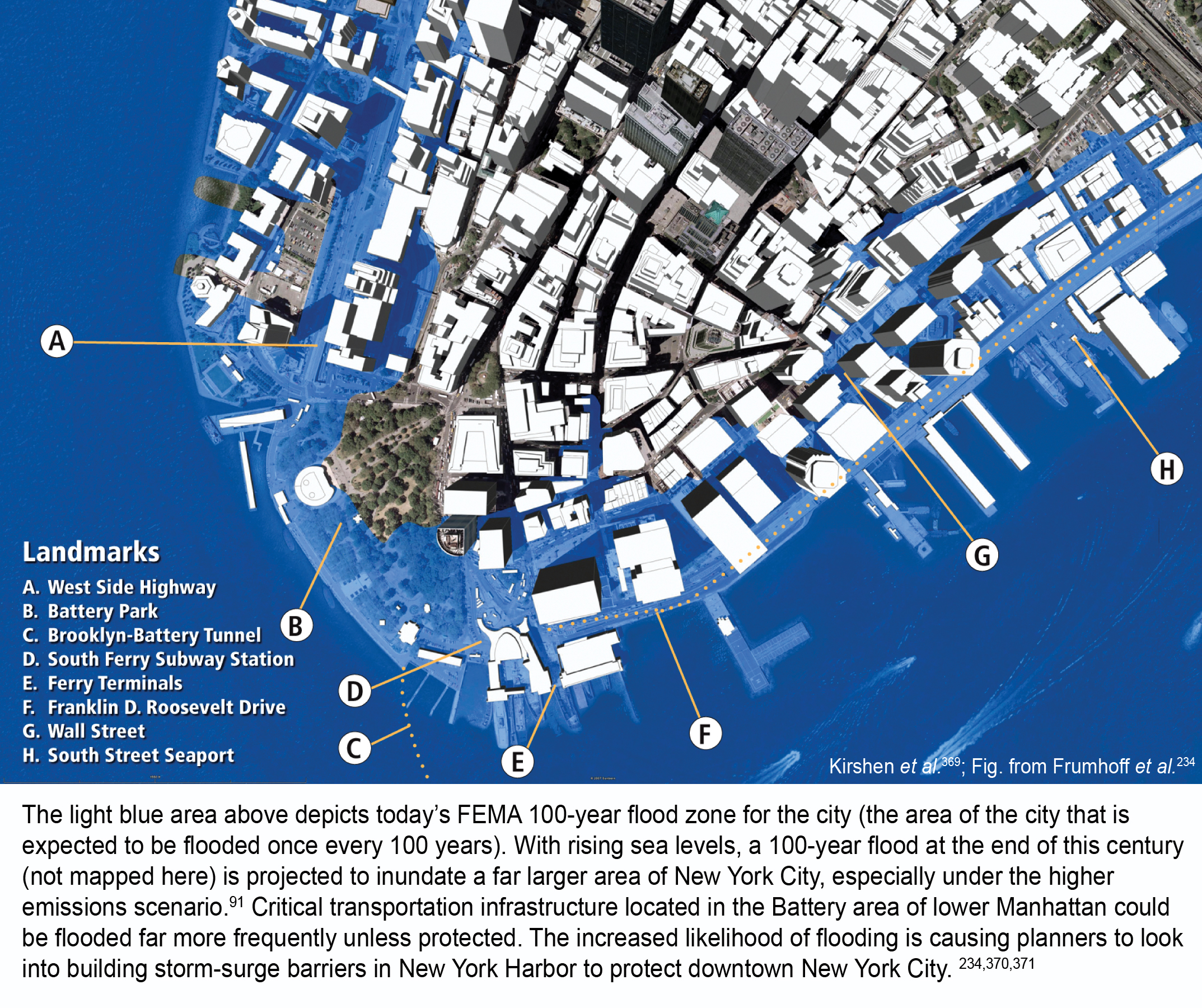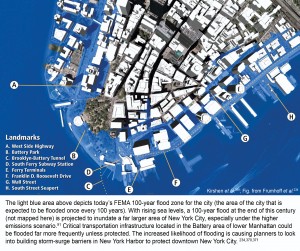
The Cost of Inaction
According to the Associated Press, the damage caused by Hurricane Sandy is estimated to cost New York roughly $42 billion dollars. This total is broken down into $32 billion for repairs and $9 billion for preventative measures for future storms.
On November 26th, Mayor Bloomberg released an estimate for the cost to New York City alone, which he said will total $19 billion. He has asked federal lawmakers for an additional $10 billion alongside the $5.4 billion that NYC will receive as standard disaster aid from the Federal Emergency Management Agency (FEMA).
Last year, ASP released a series of 50 reports detailing the economic costs that inaction on climate change could have for each state in the United States.
This report series, entitled “Pay Now, Pay Later” has become even more relevant in light of recent natural disasters and the current state of the global climate. Of particular interest is the Pay Now, Pay Later report upon New York.
In the New York report, it was projected that the “increased frequency of hurricanes, Nor’easters and other extreme events exposes New York’s coastal areas to hundreds of billions—if not trillions—of dollars in losses”.
Due to New York’s massive amount of coast line (nearly 3,900 miles of coast), it is severely vulnerable to flooding, changes in water elevation, and dangerous storms. Currently, nearly 87% of New York’s residents live in coastal regions, and climate change-induced flooding could cost these regions more than $1.9 trillion in insured property.
Even more threatening, “current 10-year floods are predicted to occur as often as every 6.5 years by the 2020s, while what currently are once-in-a-century floods are predicted to hit the New York City metropolitan region as often as every 43 years”.
Massive storms will increasingly plague New York and NYC, as climate change affects global weather systems. While Sandy was responsible for a devastating $42 billion in damage, it is estimated that if a Category 3 Hurricane were to hit the New York metropolitan area, it would result in damages close to $200 billion or more.
Forceful action must be taken to mitigate economic disasters resulting from climate change. The United States must re-evaluate its current energy practices and strive to ensure that our climate remains hospitable for future Americans.
However, it also means that over the next few decades, a certain amount of climate change is inevitable, and we must begin to adapt. That means building more resilient infrastructure, transmission lines, and distributed energy. It also may mean reforming the federal flood insurance program so that development is not encouraged in flood prone areas.
New York’s recovery from Hurricane Sandy will continue slowly, but we must begin to plan for the next major storm.
Click here for an interactive map created by The New York Times showing how rising waters could affect major U.S. cities.






[…] The Cost of Inaction […]